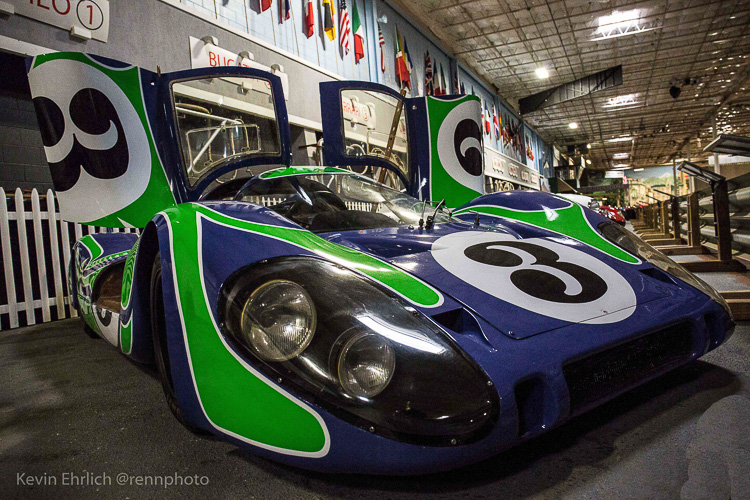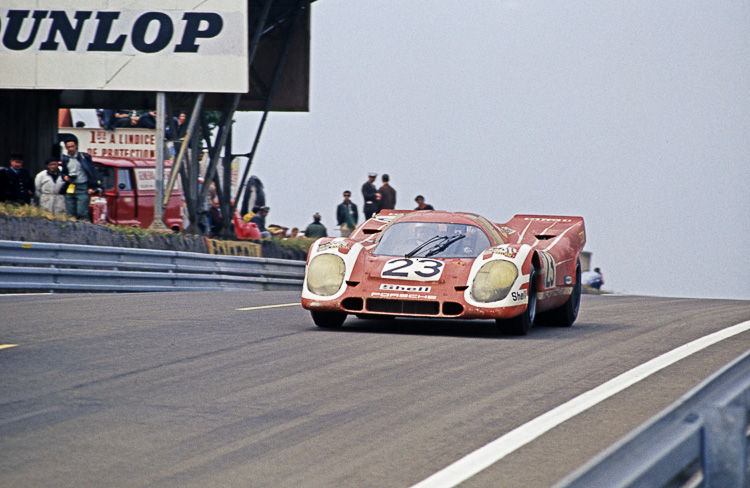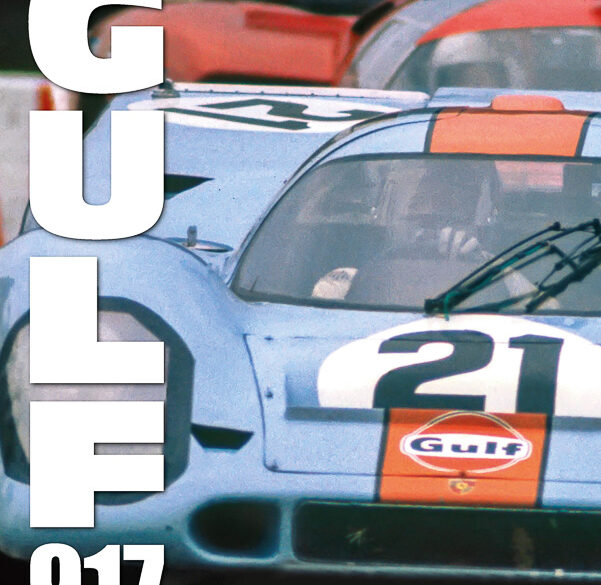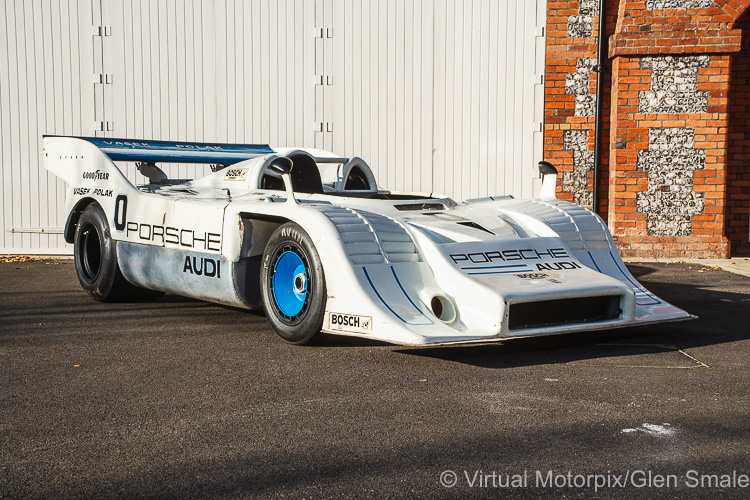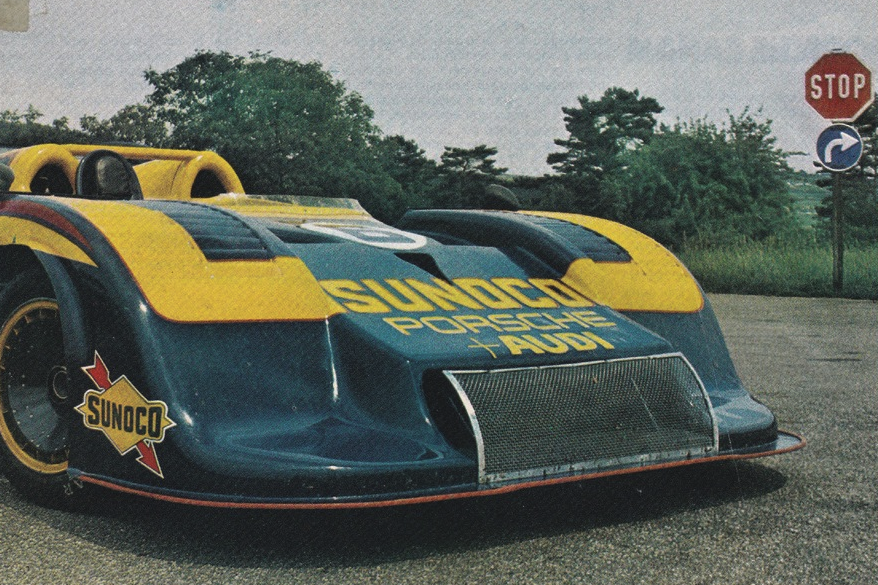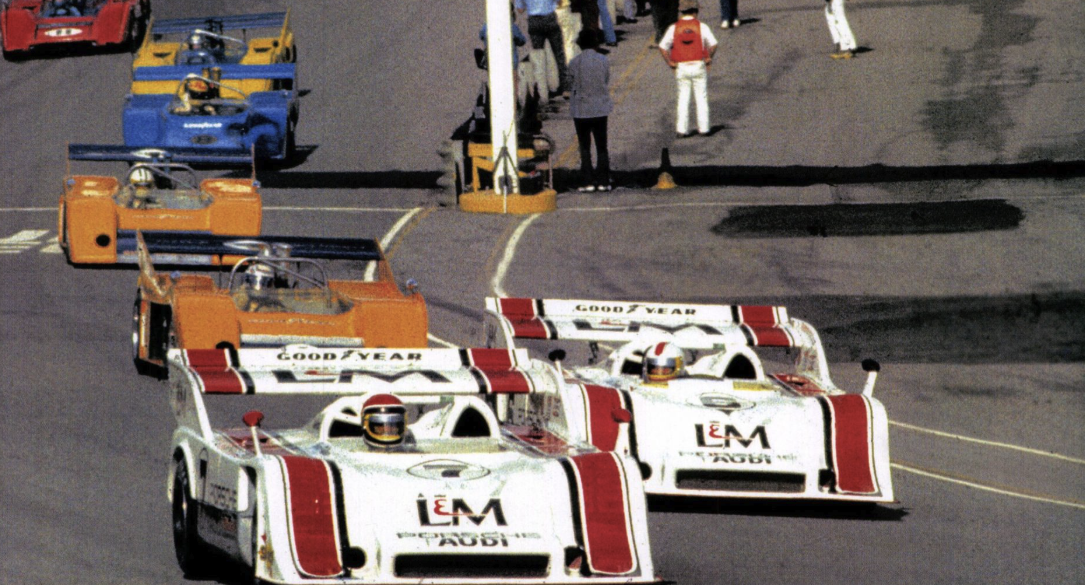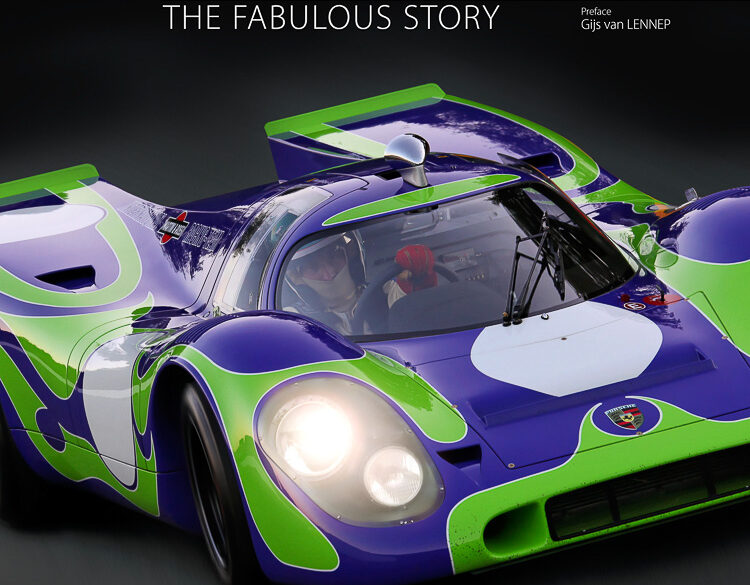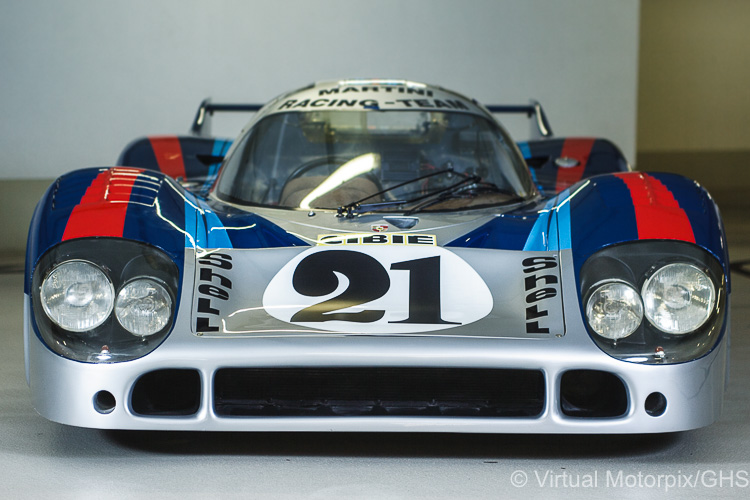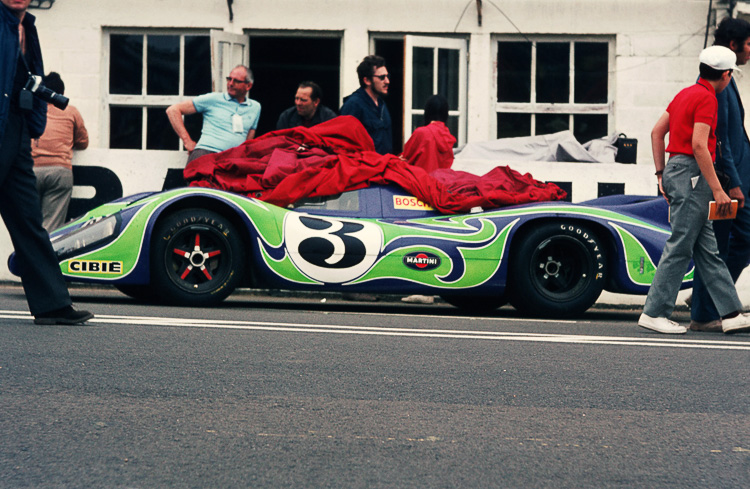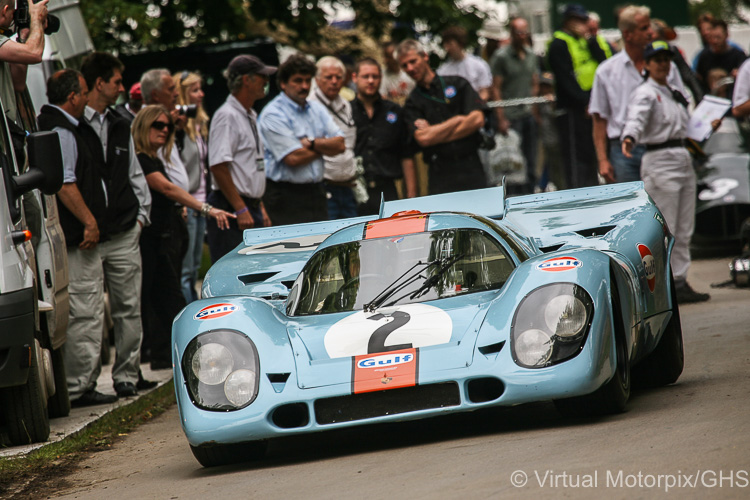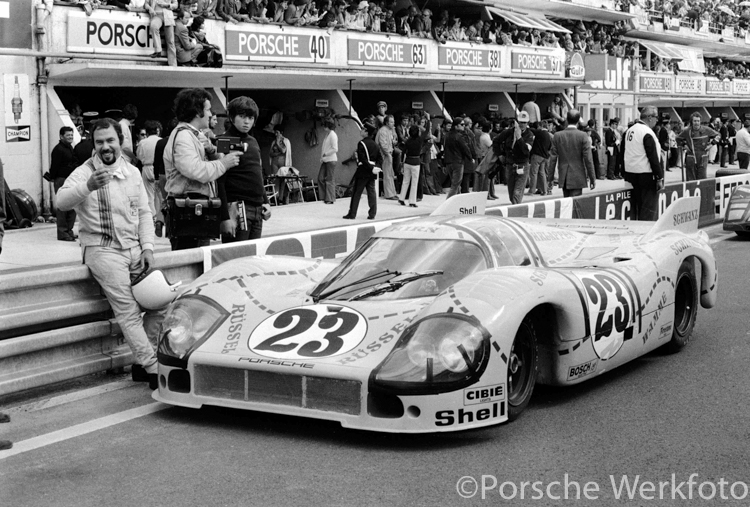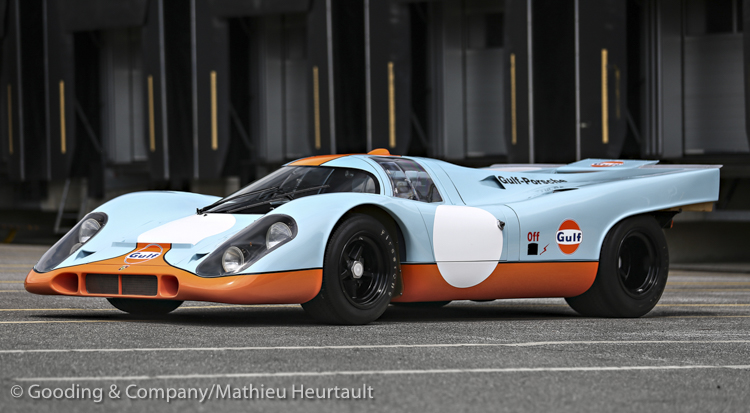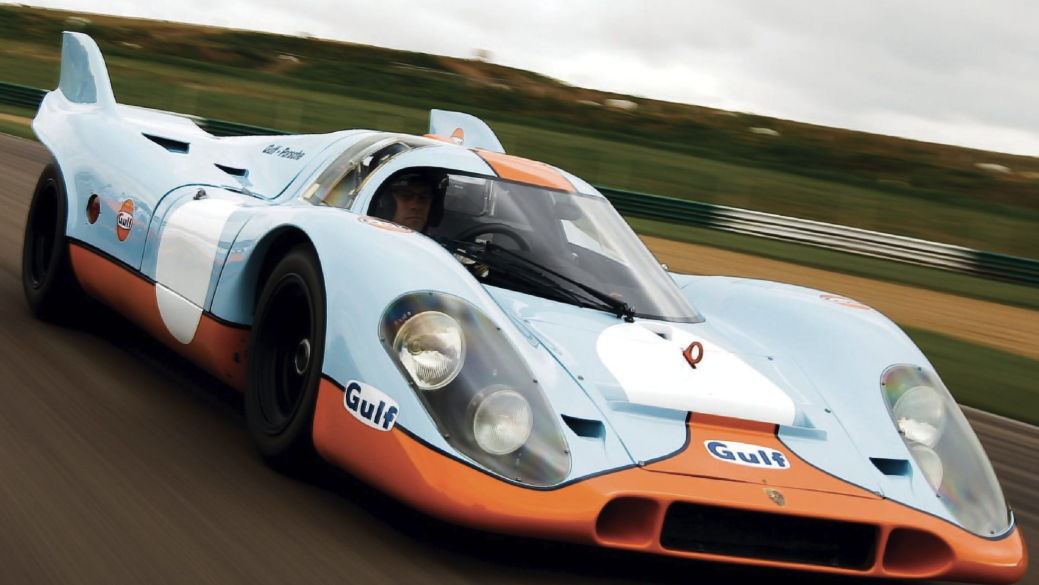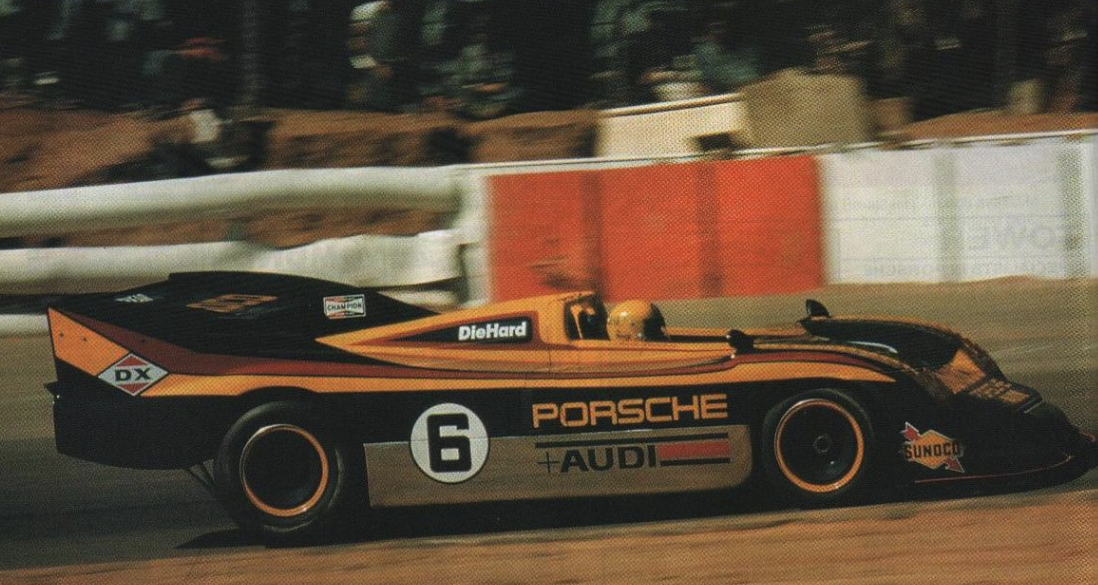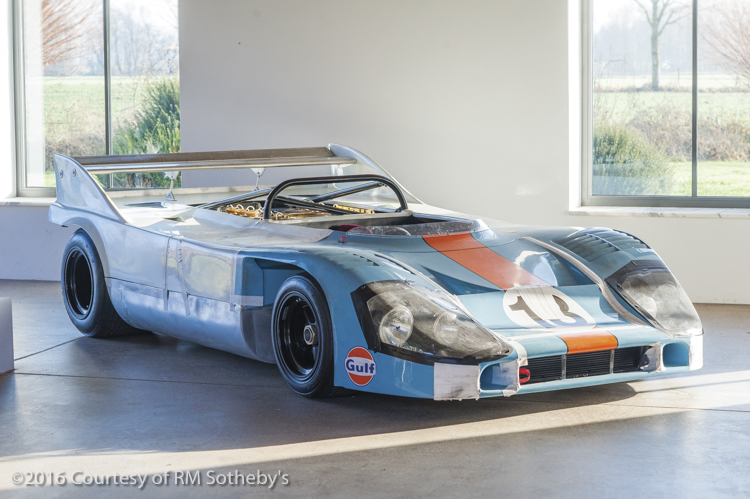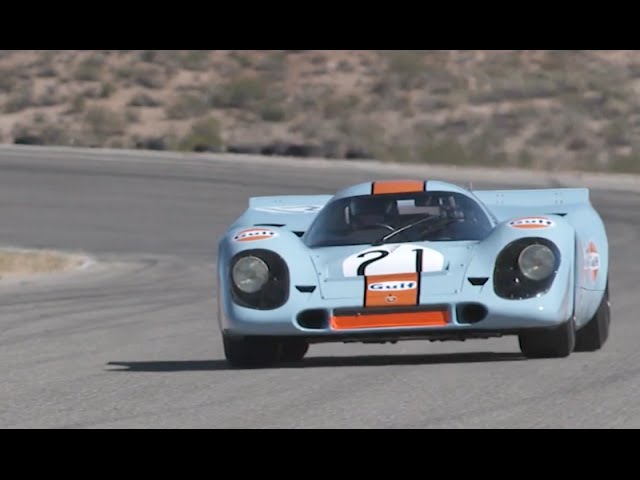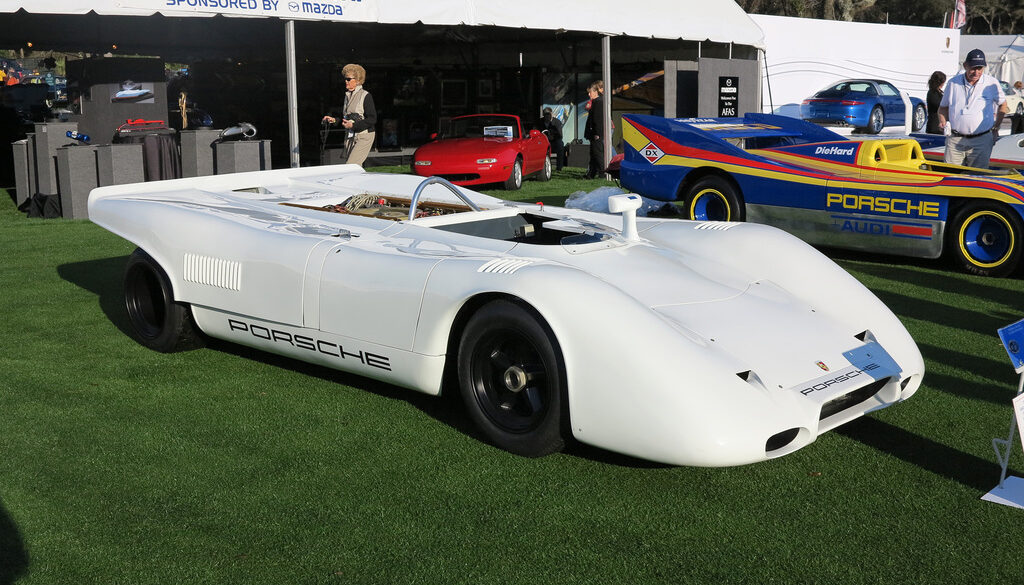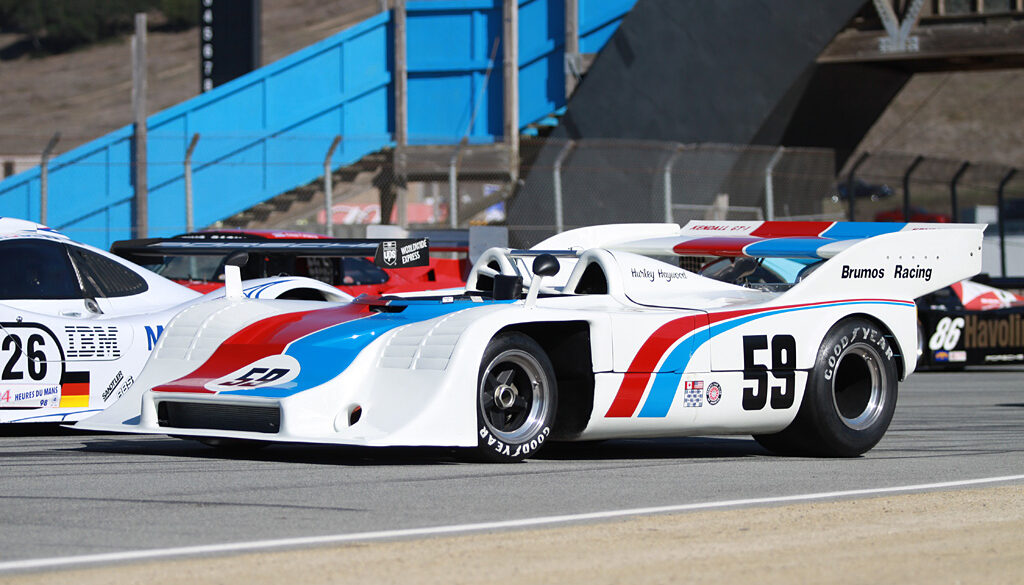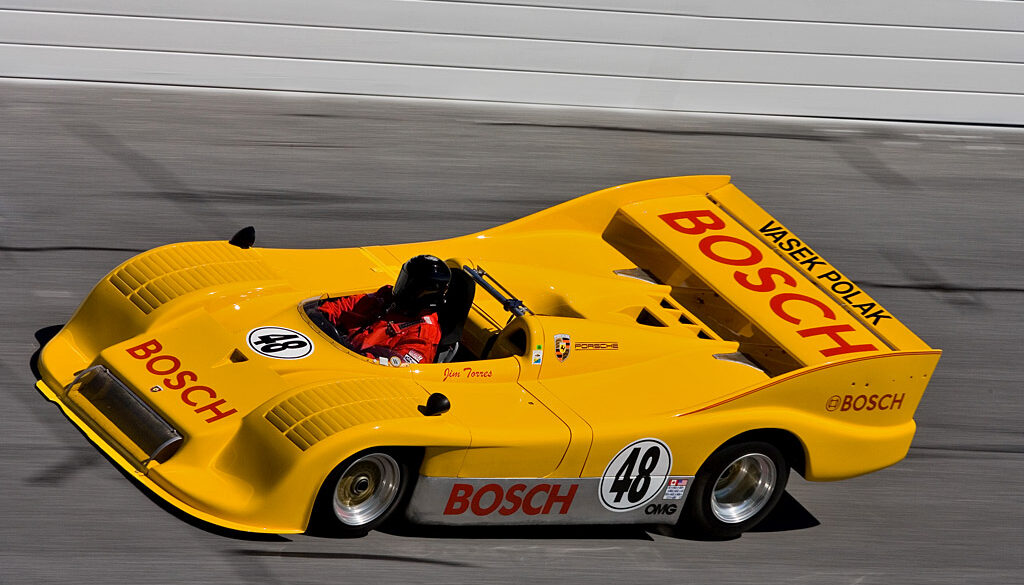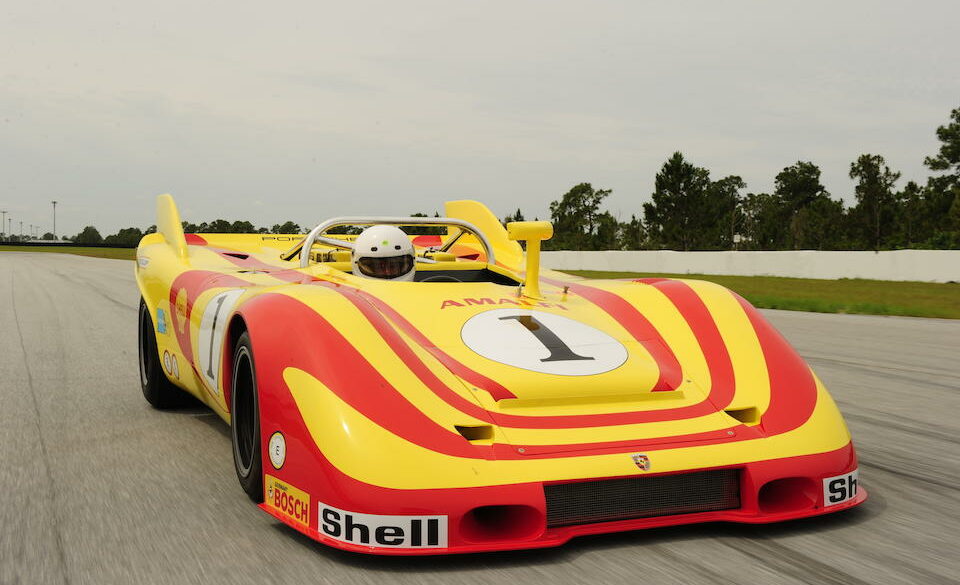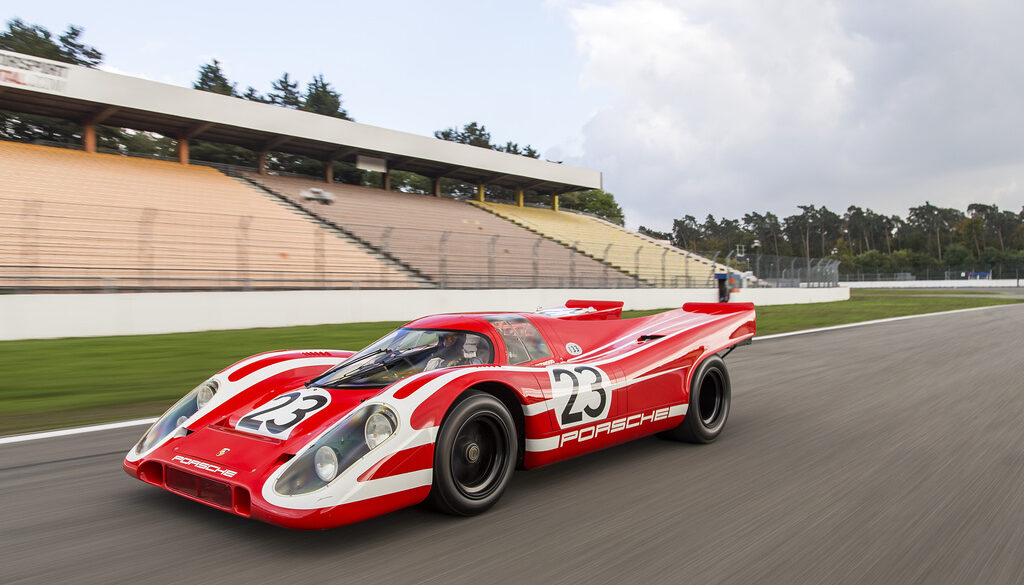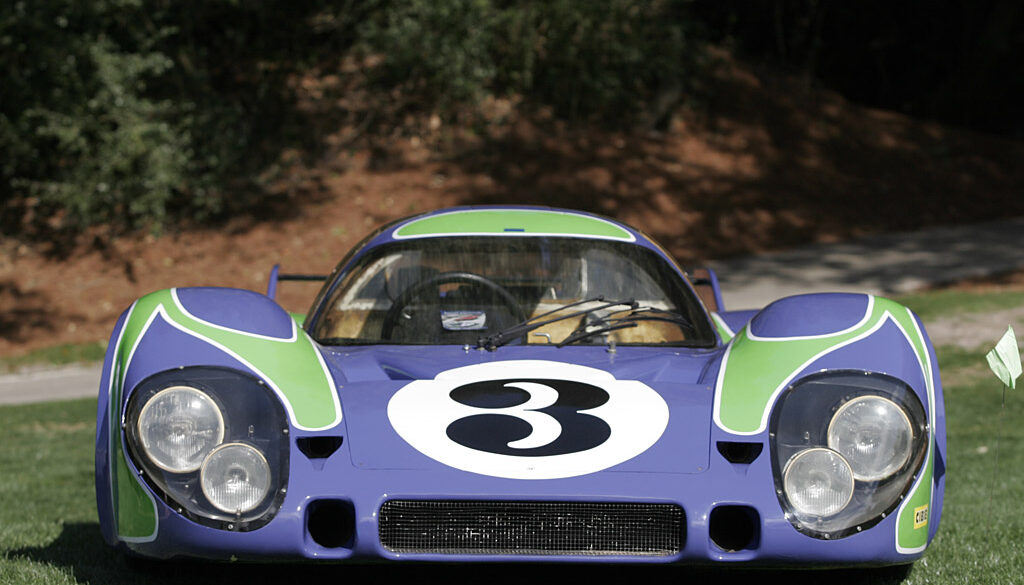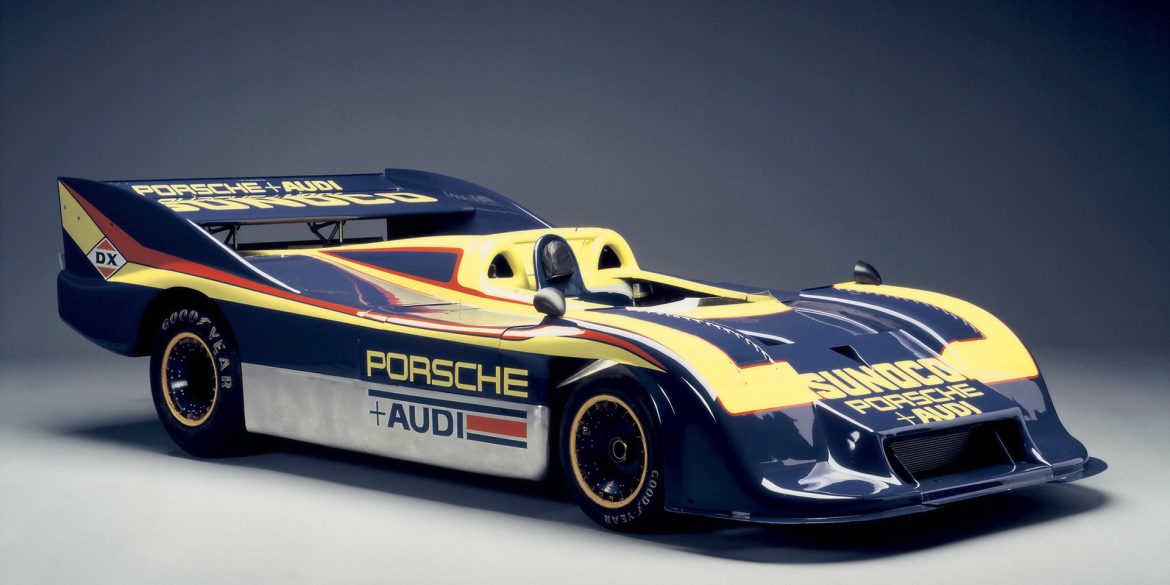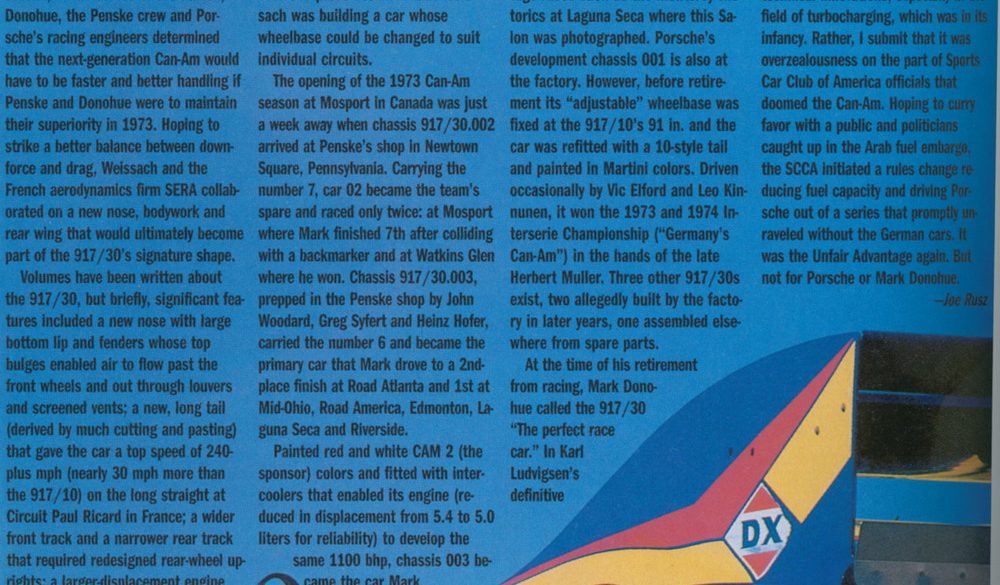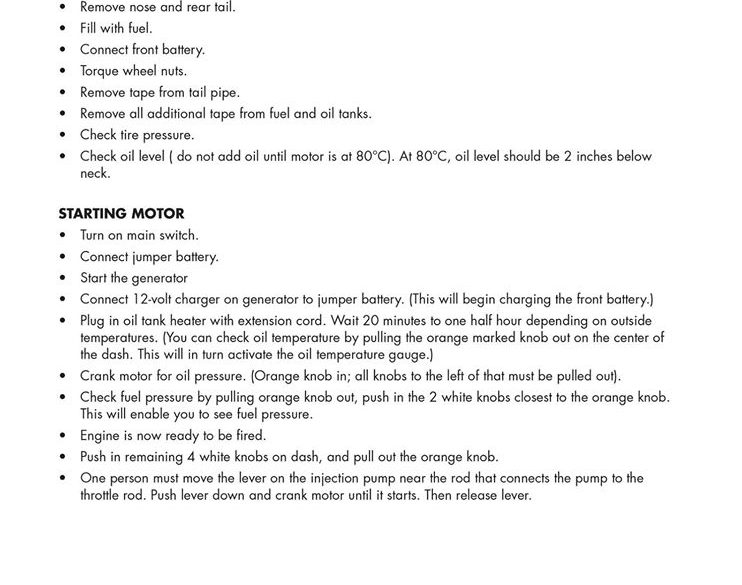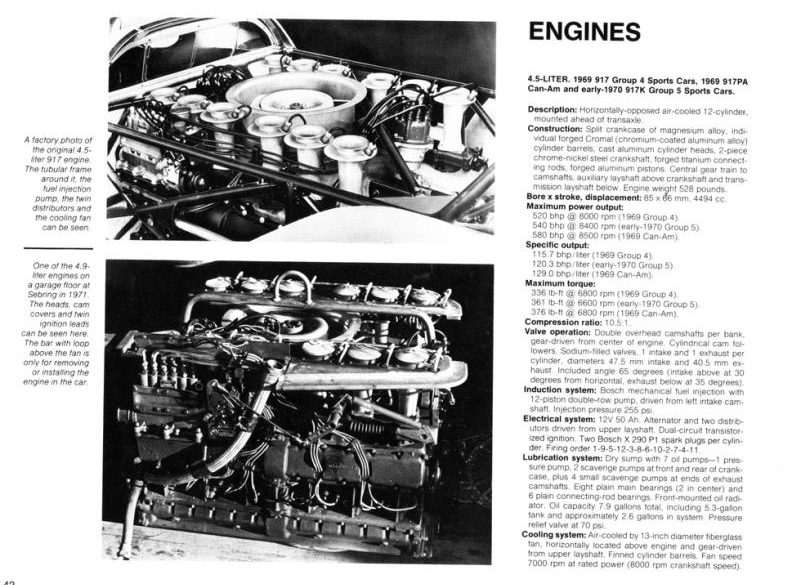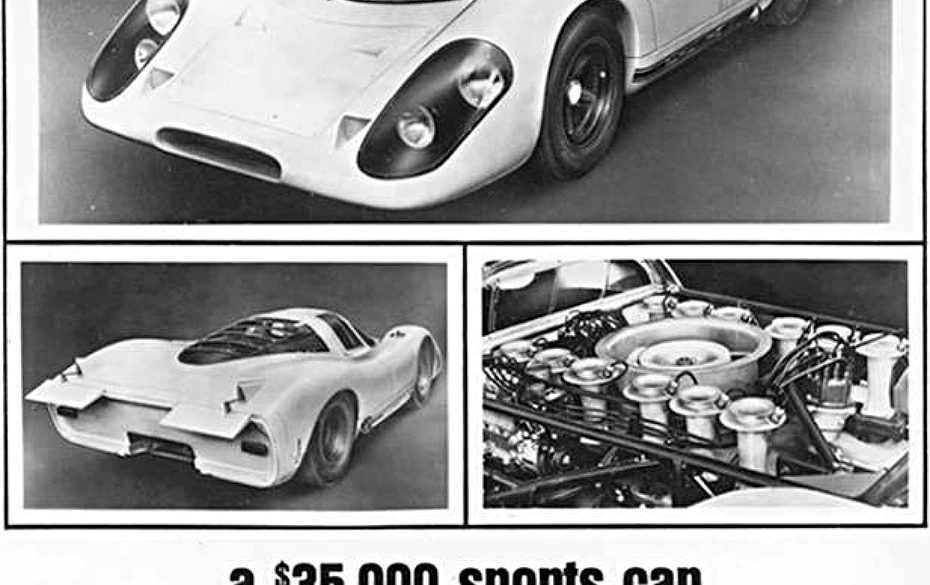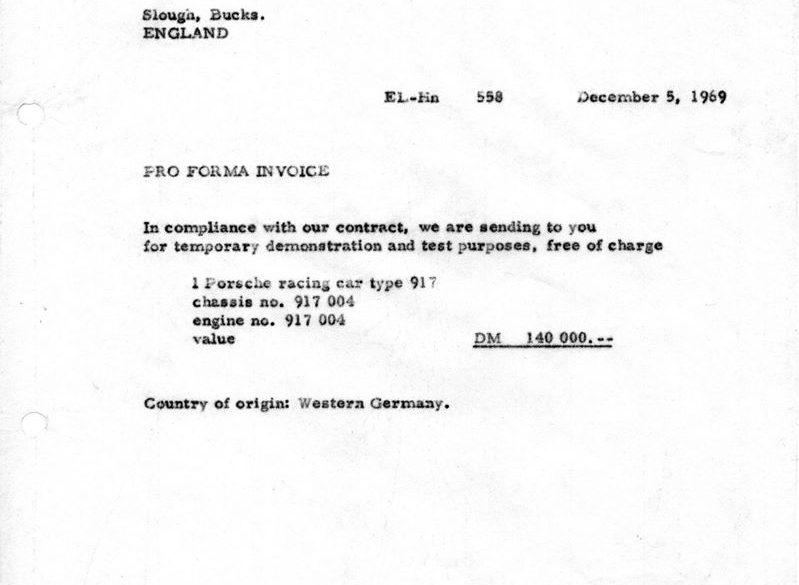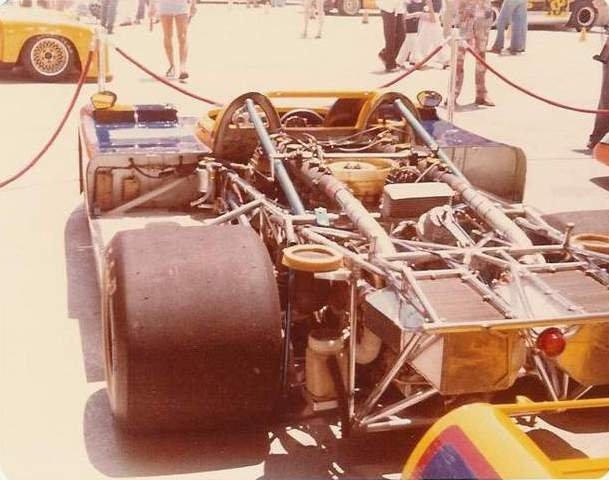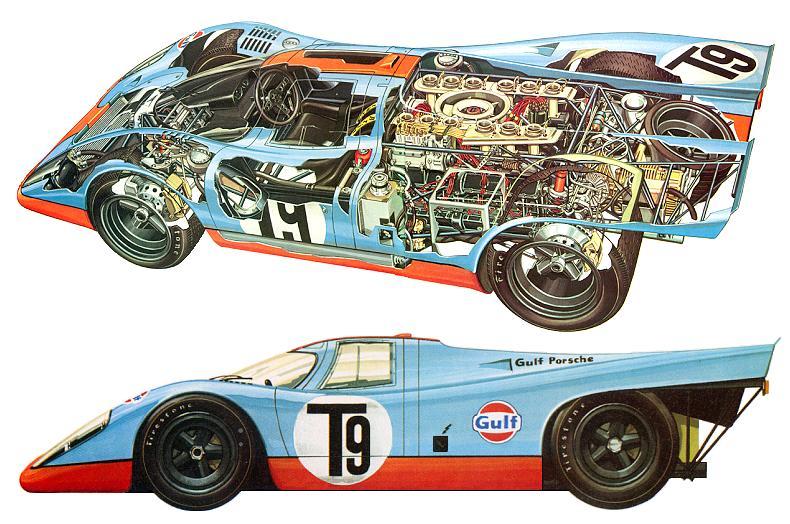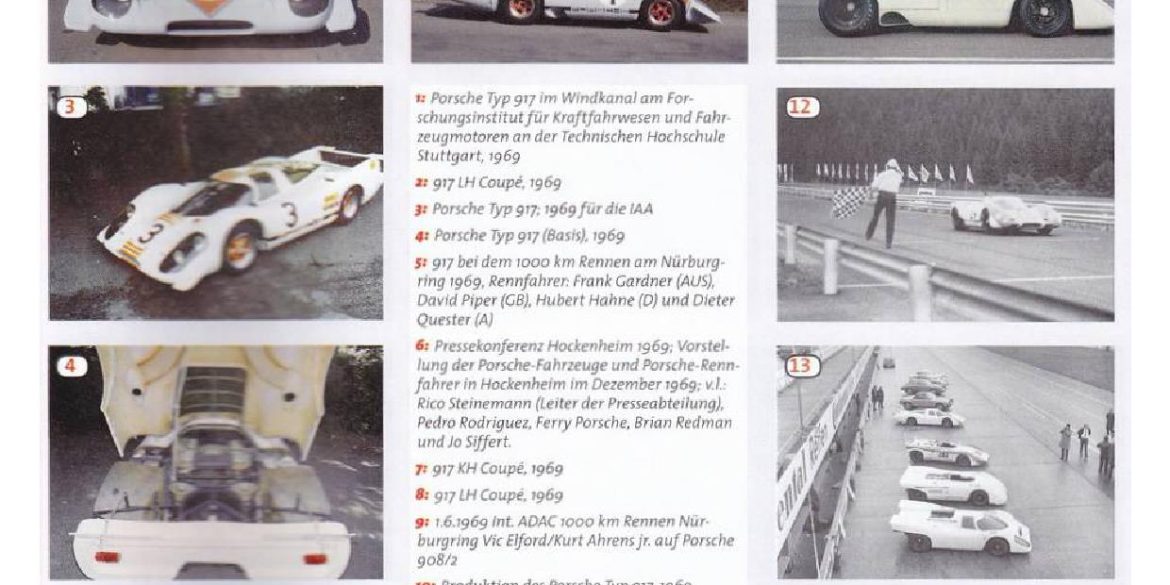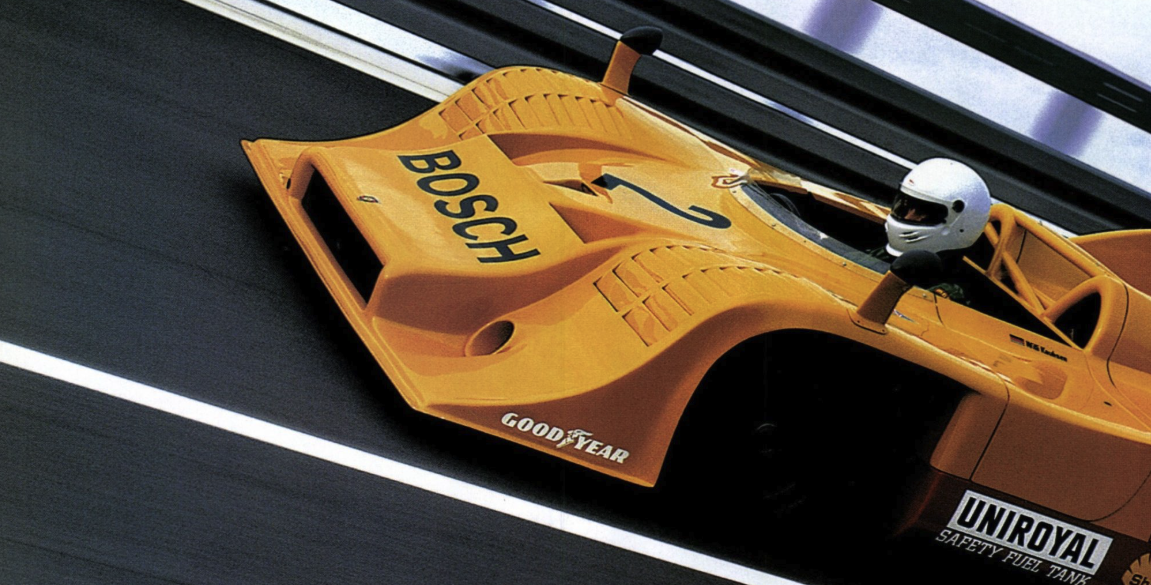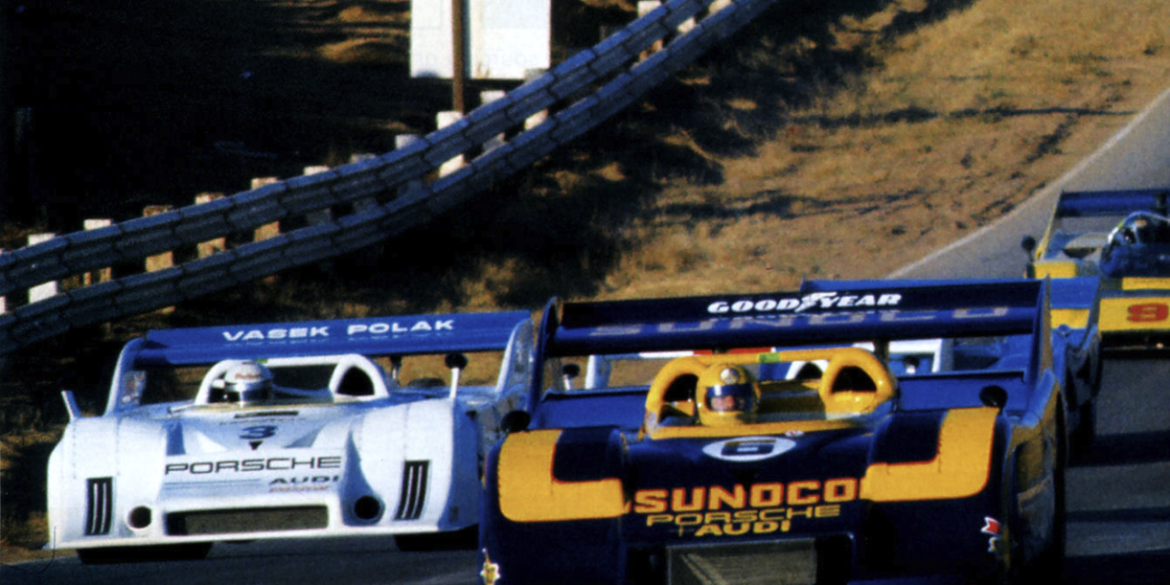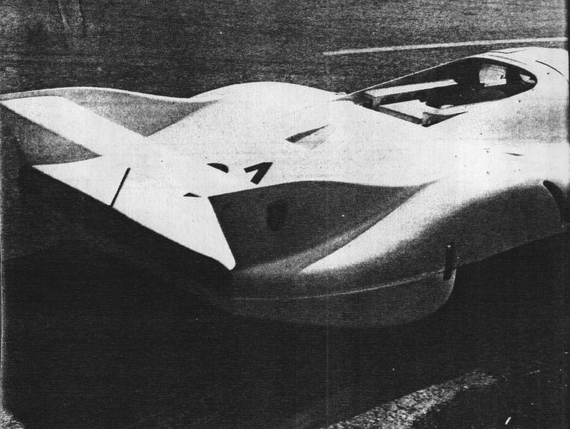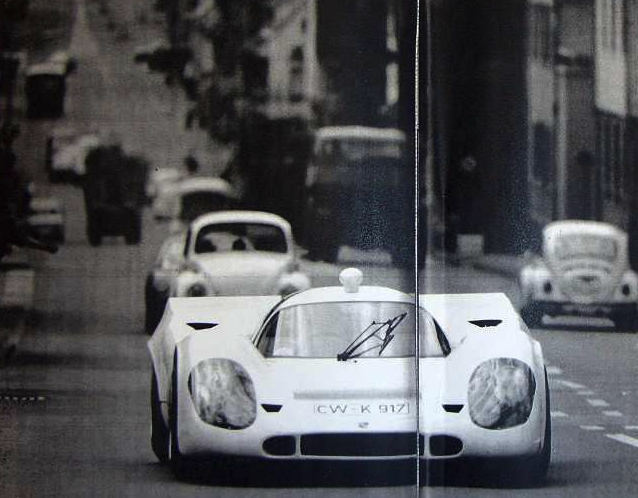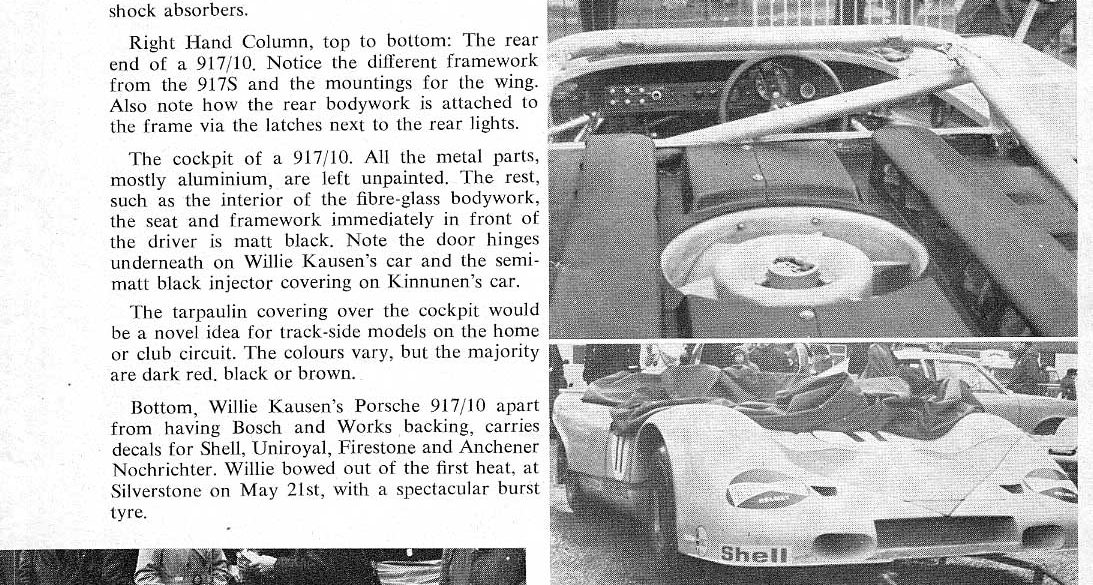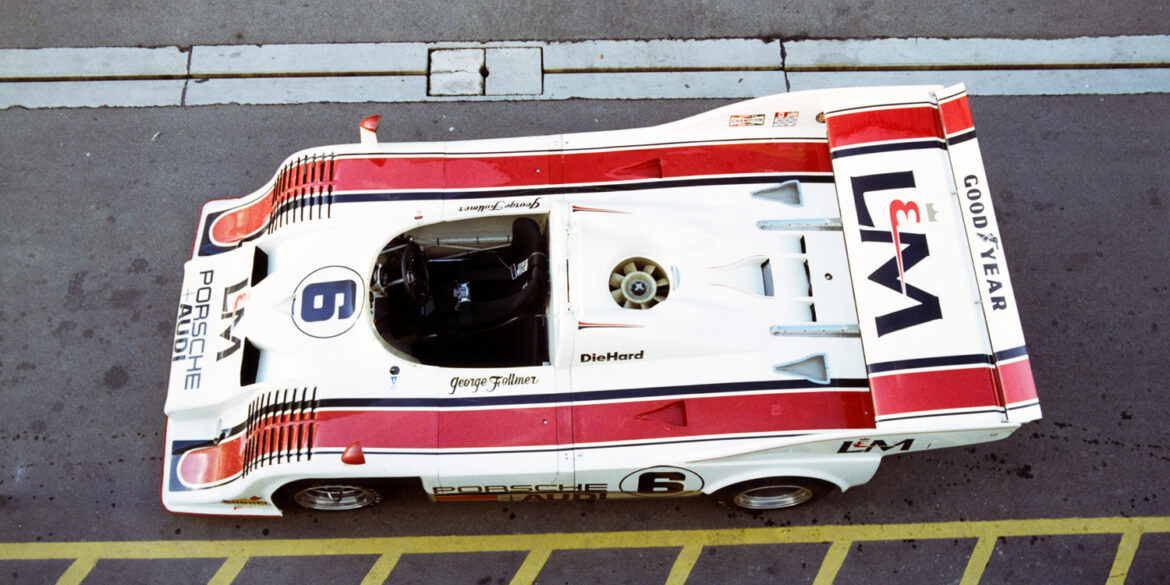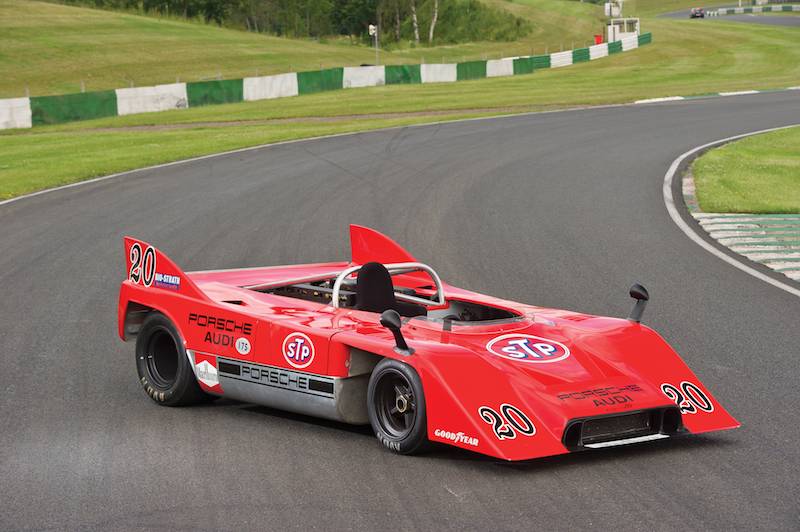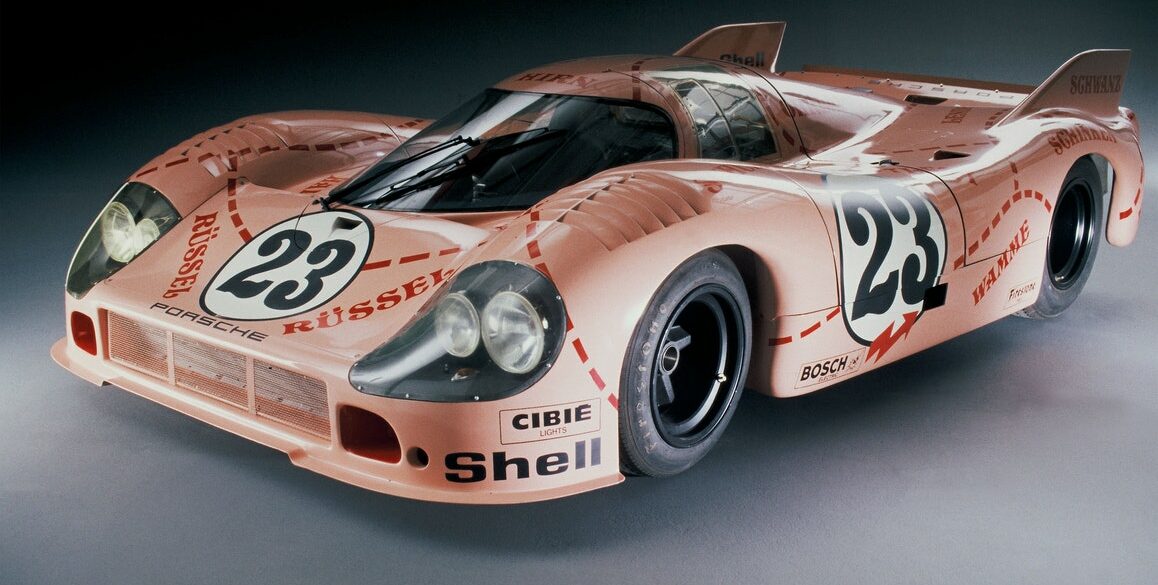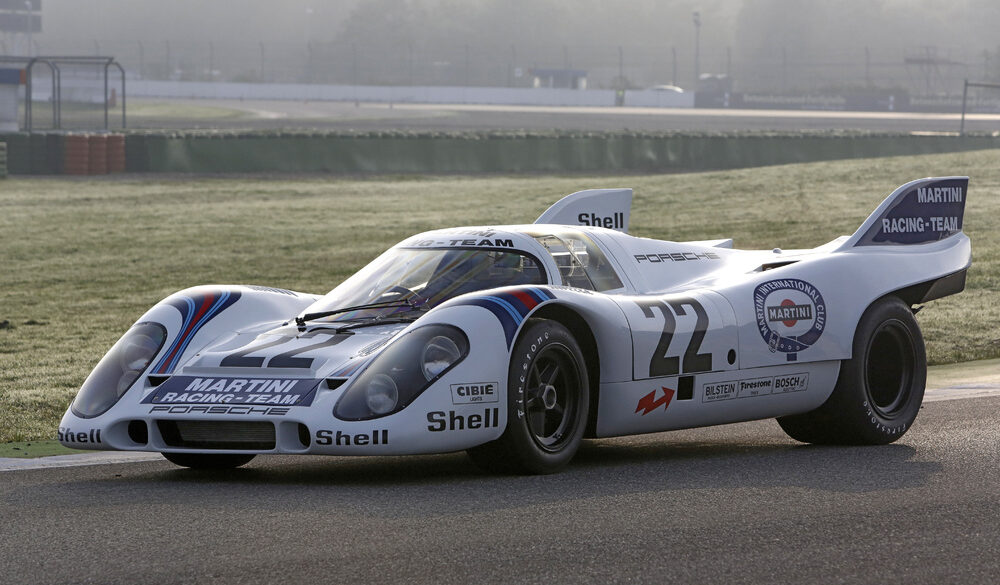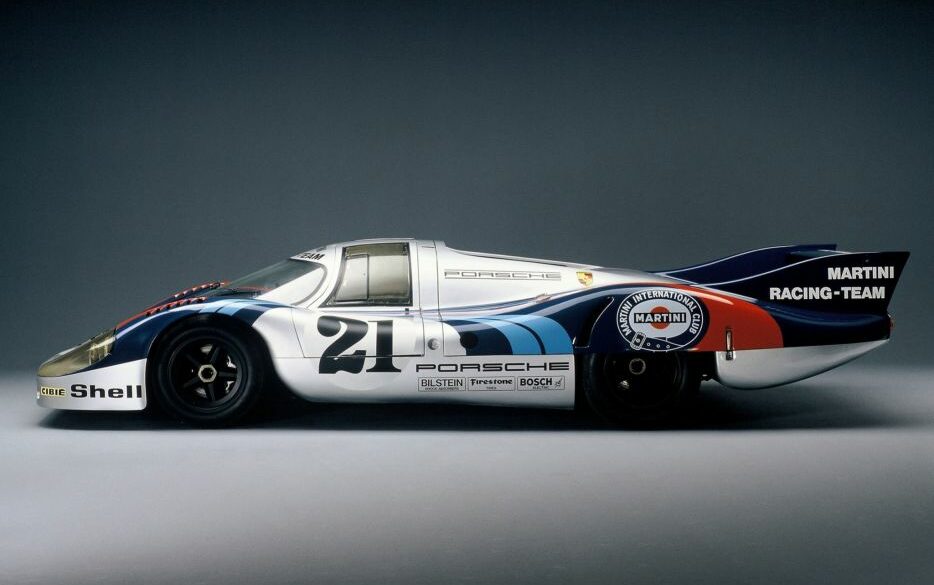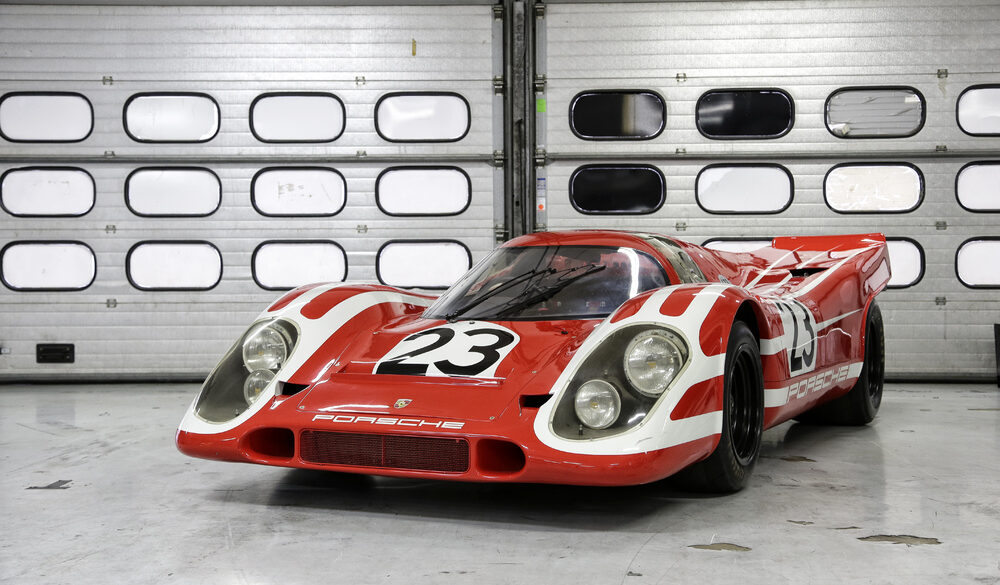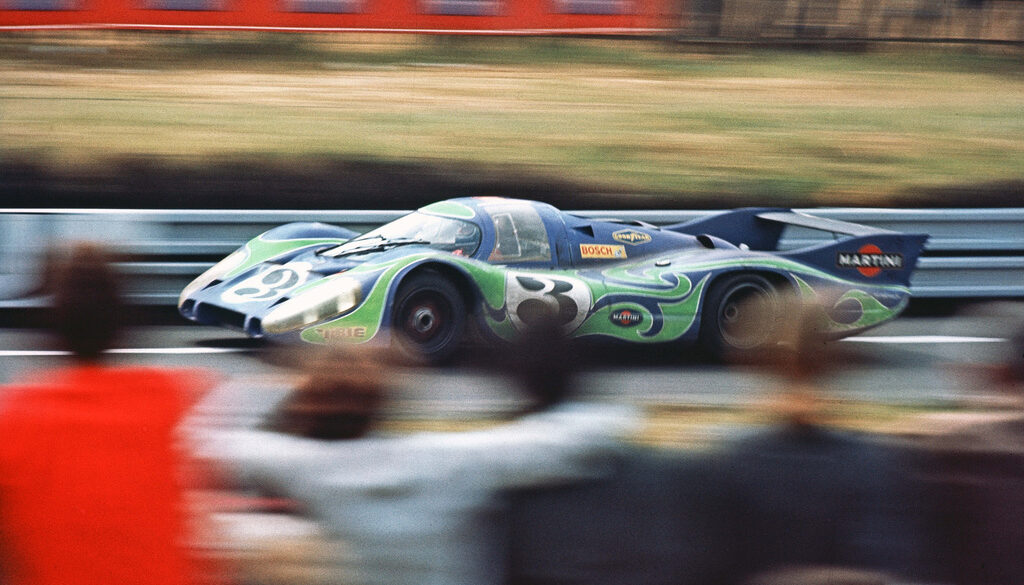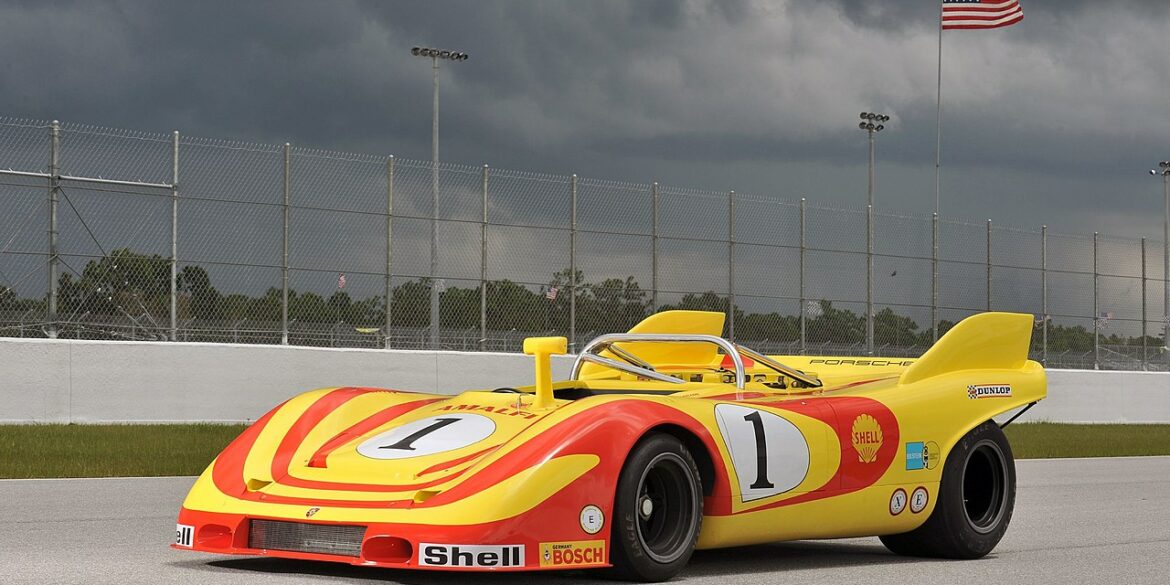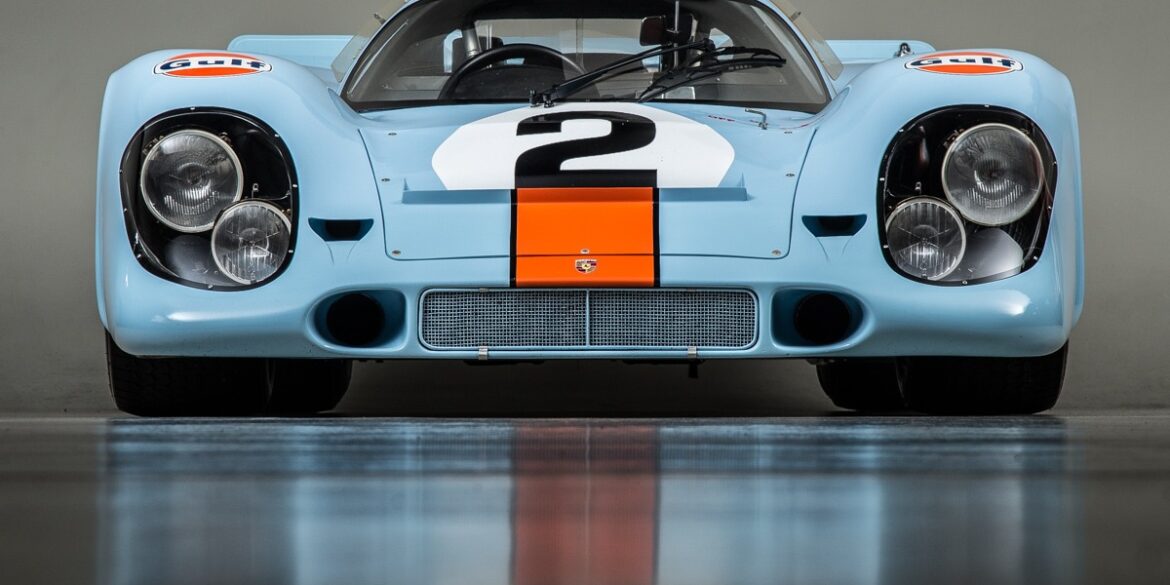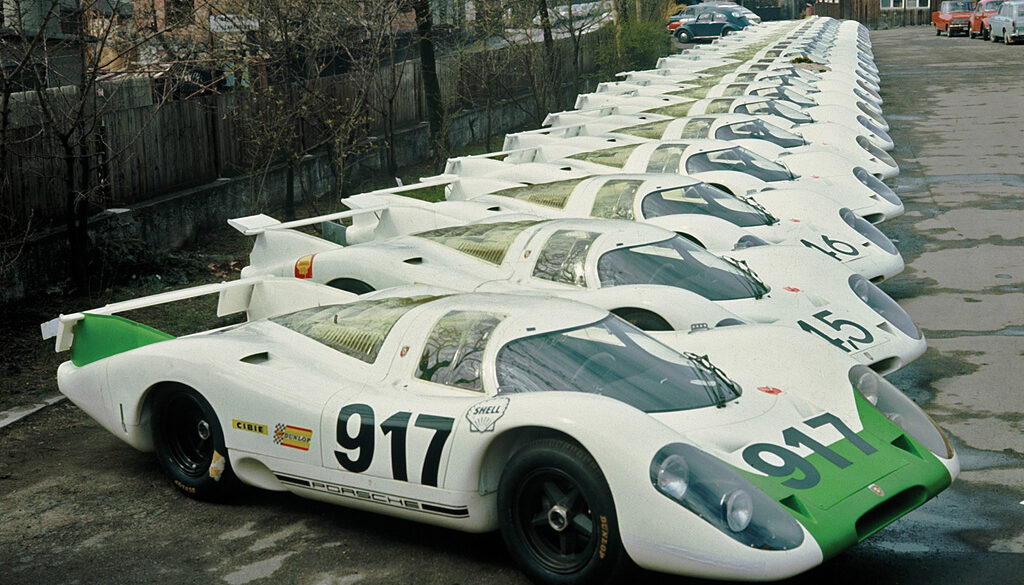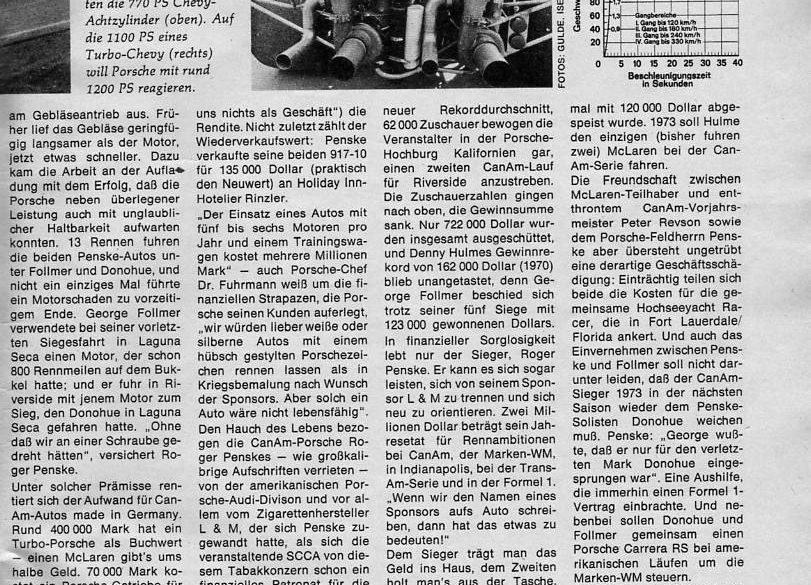Porsche – Graphisme 917 by Stéphane Coradi © Virtual Motorpix/Glen Smale Porsche Graphisme 917: This is Stéphane Coradi’s second publication in less than a year, the man is irrepressible. His enthusiasm for the Stuttgart marque knows no bounds, and combined with a unique artistic talent, this new book is quite...
Porsche 917
Porsche 908, 909 and 917 racing cars were the brainchilds of engineering genius Ferdinand Piëch, the grandchild of Ferdinand Porsche and nephew of Ferry Porsche. The 917 was the only Porsche model produced with the 12-cylinder engine and experimentally even with the 16-cylinder. When the new rules for the International Championship for Sports Cars were made public at the end of 1967, the team in Stuttgart-Zuffenhausen decided to build a new race car for the under-five-liter class. As the successor to the successful 907 and 908 types, the 917 got an air-cooled twelve-cylinder engine. Powered by the Type 912 flat-12 engine of 4.5, 4.9, or 5 litres, the 917/30 Can-Am variant was capable of a 0-62 mph (100 km/h) time of 2.3 seconds, 0–124 mph (200 km/h) in 5.3 seconds. The long tail Langheck version had a maximum measured top speed of 362 km/h (225 mph). It was dominant, scary and probably the most insane racecar ever built. See all our Porsche 917 Research.
All
Simeone Foundation Museum – 1970 Porsche 917-043 While diplomats and cartographers may technically show the roads around Le Mans as French soil, Porsche has laid claim to the winding bit of pavement that comprises the race track and especially victory lane. Since 1951, when a silver Porsche 356 clocked up...
1969 Porsche 917 LH poses outside the workshops in Stuttgart-Zuffenhausen © Porsche Werkfoto The world has become obsessed with anniversaries or facts that you can leverage, in order to bring your message across. And that is also true to some extent about this account of a legendary race car, but...
Gulf 917 by Jay Gillotti – © Dalton Watson Fine Books There is little that you can add to the vast history that is already known about the Porsche 917, or so you might have thought. But the quietly spoken Jay Gillotti, has pieced together a valuable and mightily useful...
1973 Vasek Polak Porsche 917/10-018 Cam-Am Spyder driven by Jody Scheckter Jody Scheckter was born in East London on the east coast of South Africa, a sleepy seaside town that actually carried the honour of being the country’s motorsport centre up until the early 1960s. In 1973, Scheckter, by then...
The fabulous story of this car’s life begins in 1970 with the construction of chassis #021, one of the first batch of twenty-five 917s to be built. In April 1970, the newly completed chassis #917-021 was sold to the Finnish AAW team, finished in the red and yellow colours of...
#21 Martini Porsche 917 LH (chassis #042) was driven by Gerard Larrousse and Vic Elford in the 1971 Le Mans 24 Hour race – DNF, lost engine cooling fan From 1964 through to 1969, Porsche lifted its game from being a class winner to setting international lap speed and endurance...
Memories of Porsche 917-021 at Le Mans 24H and driving at Spa Francorchamps. This video footage was shot to accompany the book ‘Porsche 917-021 – The Fabulous Story’....
The video shows the Porsche 917 in action driven by Derek Bell. It also contains some period footage of an interview with Brian Redman and Derek Bell explaining the car in detail....
Original video footage (45min) of the Porsche Rennsport Reunion III at the Daytona International Speedway, held in November 2007. The event was sponsored by Porsche Cars North America and organised by Brian Redman’s Intercontinental Events, Inc....
If you would like to own a piece of motor racing history, no, make that a very significant piece of racing history, then pay attention. Porsche 917 K (chassis #917-024), once owned by the master of the 917 himself, Jo Siffert, was part of his private collection. 917-024 did not...
Mention the name Porsche and motor racing, and minds immediately focus in on one of the famous race cars to pass out through the gates of the Stuttgart manufacturer. Depending on your age or favoured period in racing, the number of ‘best’ racers will be many and varied. However, the...
1971 Porsche 917 16-Cylinder Prototype Pictures & Gallery...
1971 – 1972 Porsche 917/10 Pictures...
1973 – 1974 Porsche 917/30 Spyder Pictures...
1970 Porsche 917 ‘Interserie Spyder’ Pictures...
1970 Porsche 917 K Pictures...
1970 Porsche 917 Langheck Pictures...
‘Scary’ is not an adjective uttered often by seasoned racing drivers in the company of their peers, but it tripped easily from the lips of the small band of heroes who drove Porsche’s first 12-cylinder Type 917 sports cars. Few racing cars since the hairy-chested Mercedes-Benz and Auto Union Grand...
Porsche 917/30-003 1975 Team Penske In 1976 Penske sold the chassis to privateer Otis Chandler. Pictured Riverside, 1979. Porsche 917/30-003 test drives ...
The 917/20 Turbo is a confusing car - its chassis number reads 917/30-001, but it is not the real 917/30. In its first race it was called as the 917/10 Turbo. Sharp eye can detect that it was not just the 917/10 Turbo, but an evolution of it. At the same time it was not the evolution of the 1971 Le Mans 917/20. Still, the car should not be called as the 917/30 to distinct it from the "real" 917/30 Can-Am racers and in 1974 it was decided to call it as the 917/20 Turbo.
The final evolution of the 917 was created after Ferdinand Piëch had left the Porsche company in 1972. Two complete 917/30 Can-Am cars with 2500 mm (98.4") wheelbase were made for Roger Penske Enterprises racing team. They were chassis 917/30-002 and 003. The 001 car was not a real 917/30 and was raced in Europe at the Interserie. The Can-Am 917/30 had a 5.4-litre flat 12-cylinder twin-turbo engine which produced so much power that nobody really knew how much.
The first turbo-Porsche, Can-Am winner 1972, Interserie winner 1972, 1973. The first ever publically seen turbocharged Porsche was the 917/10 Turbo with chassis number 917/10-011. It was entered for the June 11, 1972 Can-Am Mosport race. Mark Donohue was fastest in the qualification with it, but scored second in the 80 laps race after the 8.1-litre McLaren. The Porsche Turbo era had begun. Eight 917/10 were racing in 1972 in Can-Am and in Interserie.
The 1972 917/10 was similar in its design to the 908/03, but, of course, had the 12-cylinder engine instead of the 3-litre flat-8. The 917/10-72 was first seen at the Interserie Nürburgring race on April 3. It was the chassis 004 car of Leo Kinnunen and Keimola Racing Team AAW. Kinnunen scored 4th in the first race, but would win the championship by the end of the season. The second Interserie race was at Monza on May 1st and that race was won by chassis 917/10-002 and Willy Kauhsen.
Jo Siffert was the first to take the 917 to Can-Am championship. The car he used in 1969, was the 917 PA Spyder. Although he participated in one Can-Am race in 1970 with a 917 K, that season he skipped. He was back from mid-season 1971 and now with the 917/10. Only two 917/10 were created in 1971. The chassis 001 was used for testing and the 002 by Siffert. He took part in six races out of ten, managed podium finishes three times and scored 4th in the season, like in 1969.
An attempt to blend the best aerodynamic characteristics from both the short-tailed 917 K and long-tailed 917 LH led to the the 917/20, otherwise known as the Pink Pig. The car's combination of a long body, stubby face, and wide hips gave it a pig-like look, which inspired Porsche designer Anatole Lapine to give the car a pink paint job with butcher cut lines covering the exterior. It was hugely popular at the 1971 Le Mans race, and was the fastest in qualifying and nearly came in fifth place, before a brake failure caused it to crash before the finish line.
The “shark fins” on the tail gave the Porsche 917 KH 1971 greater directional stability and reduced wind resistance by 11 percent. In 1971 a veritable armada of six Porsche 917s started at Le Mans. The car with start number 22 was special. The white race car with the characteristic Martini stripes had the new “shark fins” on the tail that Porsche had first used in pretraining in April. This 917 was also the first Porsche with a magnesium tubular frame to be used in a race.
Like the 917 LH of 1969 and 1970, the 1971 version was also made for one race only - the 24 hours of Le Mans. The 917 LH-70 had already proved that the body was excellent for Le Mans, so the aerodynamical modifications for 1971 were mild. The front was modified and the rear wheels were covered. The 917 LH-70 that scored 2nd at the 1970 Le Mans 24H (chassis 917-043) was modified for the Le Mans 1971.
The 917 Kurzheck Coupé (917K) first appeared in 1970 and contributed more to the Porsche 917 story than any other variant. It was a high-down force version that featured a cut-off tail for increased downforce. This reduced the cars top speed, as much as 30 mph. Le Mans winner 1970, Interserie winner 1970 and Manufacturers' World Championship for Porsche in 1970.
With the aerodynamic instability of the 917 in the 1969, two separate configurations were used in 1970. These were the short-tail Kurzheck version and the less common Langheck or long-tail. Most of the 917's accolades were achieved by the 917 Kurzheck, leaving the Langheck a less popular, but ultimately just as potent contender.
By 1969, Porsche develops the 917 Spyder with a view to competing in the extremely popular North American racing series, the Canadian American Challenge Cup (Can-Am). Three units featuring 4.5-litre twelve-cylinder naturally aspirated engines are constructed in Zuffenhausen, and Jo Siffert takes one to the US to compete in the Can-Am races, ultimately placing fourth overall. The car becomes known as the 917 PA Spyder, with “PA” standing for “Porsche + Audi” as they are the two sales organisations in the US at the time.
Although the longtail 917 was introduced first, it was meant only for the Le Mans. This meant, the short tail 917 K ("Kurz" in German for short) was raced first. The only engine available in 1969 was the 4.5-litre flat 12. The factory team enters one 917 K also for the Nürburgring 1000 km race, where it scores 8th. The factory team would not enter 917 K for racing anymore in the season, only private teams will.
For the 1969 racing season an absolutely new Porsche 917 with 4.5-litre 12-cylinder engine was created. Ferdinand Piëch relied on the skilfulness of Hans Mezger, who was responsible for the overall construction of the vehicle and its engine. The aim was to create the fastest racing car ever. Short and long tail versions were developed, called as the 917 K ("Kurz" = short in German) and the 917 LH ("Langheck" = long tail). The first car was assembled in December 1968.
The Group 7 class in CanAm was virtually unlimited with regard to regulation, so Porsche was free to try many different avenues to source extra power. Two main themes were explored: the first was to go into uncharted territory and turbocharge engines with an exhaust-driven turbine. Eventually this was the chosen route, but it didn't reach fruition until a larger 16-cylinder engine was tried.
Porsche 917 Turns 40 Porsche launched the 917 40 years ago and it’s still their most important racecar to date. This dangerous, yet successful machine gave Porsche victory at Le Mans and all the other international races of its time. Porsche started their long 917 race program in 1969 with a...
No More Content



